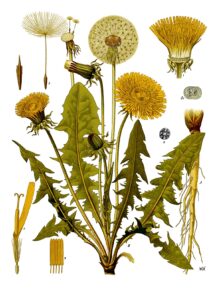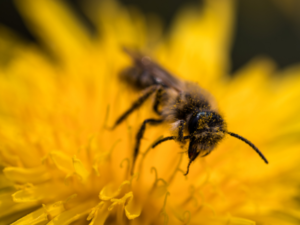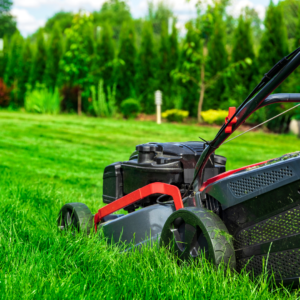Written by: Mackenzie Grenaway
They’re yellow, they have tiny petals, and you can make a wish with them too. You know what I’m talking about – dandelions! They grow wherever grass lies and never seem to want to leave once they’ve got their roots in. While they may be a flower of true beauty to some, others would beg to differ. So what are they really? A friend, a foe and…food? There are a lot of opinions on this particular yellow plant. It can be a flower, an herb and a weed all in one. It all depends on how you look at it. However, the facts about this plant will never change. One such fact, that may not be known to all, is how dandelions are consumed. Yes, you heard me right. As a matter of a fact, pretty much all of this plant is edible, from the head to the stem. Their big, bitter-tasting leaves can make for a great salad, used as a replacement for spinach and just as nutritious. Or perhaps you’re looking for a beverage to quench your thirst.
There are a lot of opinions on this particular yellow plant. It can be a flower, an herb and a weed all in one. It all depends on how you look at it. However, the facts about this plant will never change. One such fact, that may not be known to all, is how dandelions are consumed. Yes, you heard me right. As a matter of a fact, pretty much all of this plant is edible, from the head to the stem. Their big, bitter-tasting leaves can make for a great salad, used as a replacement for spinach and just as nutritious. Or perhaps you’re looking for a beverage to quench your thirst.
Dandelion root, stem or blossom can be used to make tea and wine. Using methods such as boiling, steaming and even frying, dandelions can become a whole meal on their own! Natural first-aid kit Not only are these plants good food, but they’re also useful as medicine – if you happen to have swollen tonsils, that is. When dandelions are eaten raw or in another fashion such as a soup, they have shown effects of helping to relieve patients from swelling in the tonsils, help to treat stomach and liver illnesses, help with digestion, and much more. The dandelion, originating from the Mediterranean, was originally used as a medicinal herb from Chinese culture. It is now widely known by scientists and medical practitioners as an herb, rich with vitamins and other nutritional qualities.
 What the bees need Honey bees have been on the topic of concern for a while now, as their numbers continue to decrease. This affects us all, as it disrupts our ecosystem. Being pollinators, bees provide fertilization to the plants and are responsible for the food that ends up in our stomachs. So how exactly does this relate to dandelions? Dandelions actually play a bigger role for pollinators than we give them credit for. Not only are there a tremendous amount of them, but they can also be found all over the world, as they are very common. Leaving the dandelions in your garden to grow for the spring, allows the bees and other pollinators to pollinate and collect nectar. Which, in turn, helps both us and our ecosystem.
What the bees need Honey bees have been on the topic of concern for a while now, as their numbers continue to decrease. This affects us all, as it disrupts our ecosystem. Being pollinators, bees provide fertilization to the plants and are responsible for the food that ends up in our stomachs. So how exactly does this relate to dandelions? Dandelions actually play a bigger role for pollinators than we give them credit for. Not only are there a tremendous amount of them, but they can also be found all over the world, as they are very common. Leaving the dandelions in your garden to grow for the spring, allows the bees and other pollinators to pollinate and collect nectar. Which, in turn, helps both us and our ecosystem.
Weed or flower? Now to get down to the main question – are dandelions truly bad or not as they seem? The answer is hard, since it’s split. There are some that will say dandelions ruin your gardens – while others that’ll argue the good outweighs the bad. Looking at facts, it’s safe to say dandelions have their set of benefits and disadvantages. As a flower in a garden, they become a bit troublesome. Their roots run deep and their reproduction rate is quite fast, making them next to impossible to completely get rid of. However, their benefits could easily persuade people to think twice about eradicating these plants. With their great nutritional and medicinal properties along with making a good snack and it’s contribution to our ecosystem, dandelions are practically a double edged sword. Like anything great, they come with their downfalls.

How to take care of them You know about all the benefits of having these plants around and you want to keep them, but they’ve taken over your garden! You want a safe way to get rid of them – how exactly do you do that? To start off, there are two things you definitely don’t want to use – herbicides and pesticides. Spraying them in your garden will not only affect the surrounding plants in your garden, it will also cause damage to the environment. You may not think about it at first, but the effects of herbicides and pesticides linger around, potentially contaminating the soil and water in the area, having long term effects. You can, instead, minimize the amount of dandelions using methods such as the following:
Mulching leaves – leaving a thin layer of shredded, collected leaves has shown results of stunting the growth of dandelions before they get the chance to grow again in the spring. In addition to this, once the leaves decompose, they act as a fertilizer for your garden.
Boiling water – simply boiling water in a kettle and pouring it onto dandelions can cause them to wilt and eventually die off. The water will also soak into the soil below the plant, allowing the water to get to the roots while causing the least amount of damage to the surrounding garden and environment. Dandelions, at the end of the day, are just another one of the many plants that live on earth. However, for such a seemingly common, everyday plant, the possibilities are practically endless when it comes to how this plant can be used. Whether it’s used as a medicine for the ill, a quick snack or drink, or perhaps it’s a beautiful flower to be admired and used as a nectar supplier for the pollinators, this plant should not be taken for granted. Above all, this plant is truly a one-of-a-kind beauty – the yellow, tiny-petaled, wish maker.
Sites Consulted:
- MSU – Five ways to eat dandelions
- Healthline.com/ways dandelion tea could benefit
- Wildflower.org/dandelions positive and negative effects
- Webmd.com/dandelion: overview
- Verywellhealth.com/the benefits of dandelion
- Gardeningknowhow.com/dandelion – facts
- Whygoodnature.com/how to kill dandelions
- Homeguides.com/homemade all natural dandelion weed killer
- Cbcnews.ca/Canada/Lawn full of dandelions
Photos:
- Photo #1 (top right corner) – Wikipedia/Taraxacum officinale

